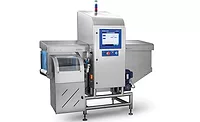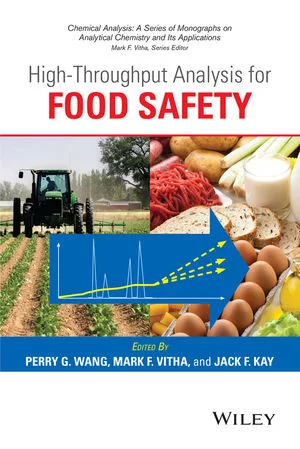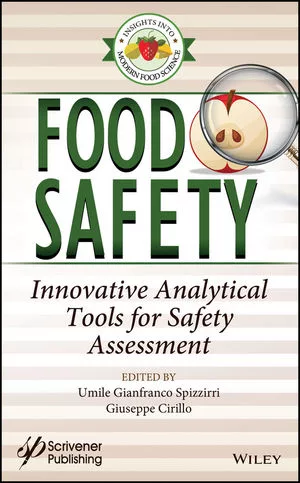A New Paradigm for Validation, Verification and Monitoring

Validation, verification and monitoring are critical components of food safety and quality management programs. But even among professionals there is confusion over what is the exact function of validation and verification. To add further confusion, the terms are not defined consistently. Table 1[1-3] provides some definitions for validation, verification and monitoring.
In my food safety seminars, I ask food safety professionals to define validation and verification. This allows for meaningful conversation on the subject. In addition, it provides for a common understanding of the terms with a minimal chance for confusion.
Another issue that occurs in the discussion of food safety systems is what constitutes revalidation or reassessment of the Hazard Analysis and Critical Control Points (HACCP) plan. To add more confusion to the discussion, the U.S. Food and Drug Administration (FDA) is now using the term “Hazard Analysis and Risk-Based Preventive Controls” or HARPC in the Food Safety Modernization Act. HARPC will apply to all FDA-regulated foods except for low-acid canned foods, seafood and juice. The food industry will have to wait to see the specifics in the FDA regulations of what is expected with HARPC, but one thing is apparent: There will be a stronger link between the prerequisite programs (PRPs) and what is now considered the HACCP plan.
The U.S. Department of Agriculture Food Safety and Inspection Service (USDA FSIS) took a little different approach compared with FDA. The most recent thoughts of FSIS are described in a publication titled FSIS Compliance Guideline HACCP Systems Validation, May 2013. In this publication, USDA uses the terms “HACCP plan” and “HACCP system.” The HACCP system is defined as “the HACCP plan in operation, including the HACCP plan itself.” In addition, the HACCP system includes the HACCP plan, all supporting documentation, PRPs, the decision or justification for Hazard Analysis and all HACCP records.[4]
A New Paradigm
I would like to pose a new paradigm for validation, monitoring and verification. Instead of looking at the three requirements separately, let’s look at them as a continuum, with different activities occurring in the different stages of developing and manufacturing a food product.
To avoid confusion, the Codex definitions (Table 1[1-3]) will be used for “validation,” “verification” and “monitoring.” Additionally, this article will use the term “reassessment” for those activities used to evaluate the HACCP system or food safety (FS) system for continued effectiveness.
Validation. Validation includes those activities that should be undertaken during design processes (see Table 2 for useful references for validating FS systems). Validation provides an answer to the following question: Will the FS system meet specified objectives with regard to food safety?
This phase has two parts:
1. The FS system design, or ensuring that the HACCP plan and PRPs are theoretically sound.
2. The FS system execution, and documentation that the FS system can produce the desired results in operations in a specified period or ensure that the plant can implement the system and make it work during actual operating conditions.
Activities included in the design phase are meant to determine if the equipment, process inputs and the environment can meet the intended FS outcomes. Outputs of this process include but are not limited to:
• Identifying hazards
• Identifying the expected level of hazard reduction or prevention that must be achieved
• Identifying critical operating parameters, including control limits
• Identifying the process steps that will achieve the needed reduction or prevention of the hazards
• Identifying the processing steps that will be monitored
• Ensuring the establishment and verification of PRPs needed to maintain the environment for processing under safe conditions
• Conducting microbial validation studies under worst-case conditions
• Establishing that the equipment in the process can operate within the established operating parameters
• Demonstrating that the critical control equipment and instrumentation can operate within the prescribed parameters for the process equipment
• Initially determining that the processing equipment is properly installed and can achieve the required objectives
FS system execution ensures that three activities take place:
1. Translation of the FS system critical operating parameters, both HACCP plan and PRPs, into specific operating parameters for a given product and process.
2. Implementation of the FS system.
3. Documentation that the HACCP plan and the PRPs are operating as planned during actual in-plant production operating conditions.
Basic questions that need to be answered include:
• Does the FS team have confidence in the manufacturing process?
• What scientific and statistical evidence is available to ensure that the process can meet the specified objectives for food safety?
• How can the FS team demonstrate that the process is effective?
After initial validation is completed, the plant needs to implement the monitoring and verification protocols. Sampling and monitoring levels should be adjusted to a statistically appropriate and representative benchmark.
Monitoring. Monitoring is designed to provide evidence that the FS system is operating as intended. This is done in a real-time mode. It should be designed to determine if the processes are in control. If a critical limit is exceeded, corrective actions should be taken. Besides comparing the datum point to the critical limit, the organization should consider plotting the data on a statistical process control chart to determine the “voice of the process” and whether negative trends are occurring in the process.
Verification. Verification activities should also begin when process validation is completed. The objective is to use continuous process verification to ensure that critical FS attributes are controlled throughout the process. The plant needs to identify key indicators, including the following measures:
• PRPs
• Ingredients
• Product attributes (both in-process and finished product)
• Key process measures
• Facility inspection results
• Internal audit reports
• Effectiveness of corrective actions
• Employee competency assessments
• Updating the HACCP plan
• Other procedures required by the plant to have an effective FS system
These results should be statistically analyzed for important trends to identify actions that need to be taken to build a more robust FS system. Verification can answer key questions such as: Are the processes remaining in control? Is new information being generated on process variation, product variation and other sources of variation so that variation can be reduced and there is more confidence that a safe product is being shipped into the market?
Case Study: Development of a Thermal Process under a Worst-Case Scenario
One way to look at the concept of validation is via the validation protocols for thermal processes.[5] Thermal process validation protocols are divided into three parts. The first part is the design of the thermal process. This can include heat penetration studies, challenge studies and identification of the critical parameters to ensure commercial sterilization after the product receives the thermal process. The design qualification phase can occur in either the processing plant or pilot plant and laboratory.
The next phase is the installation qualification. This phase ensures that the actual processing equipment is properly installed and meets final design specifications. For example, in developing a thermal process for a low-acid canned food, it is necessary to ensure that a retort does not have any cold spots.
The final phase is operational qualification. In this phase, the process authority ensures that the equipment operates according to functional specifications during normal operational conditions. Tests are conducted to ensure that the equipment performs properly under specified abnormal conditions.
Reassessment or Revalidation
The FS system literature uses the term “revalidation” or “reassessment” in regard to operational oversight. Most of the time, reassessment or revalidation refers to annual review activities that must be conducted to ensure that the FS system is operating as intended.
In reality, a complete revalidation similar to the design qualification, installation qualification and operational qualification used in thermal processing protocols is rarely done. A complete validation or revalidation study needs to be conducted only if there are significant changes in processes, ingredients, products or equipment that can affect the food safety of the product.
If a complete revalidation is not needed, the plant should conduct either an annual or a continual reassessment of its FS system. The objective of reassessment is to determine whether the FS system (basically the HACCP plan and the PRPs) is operating as intended.
The reassessment should help answer the following question: Is the FS system (HACCP plan and PRPs) adequate to control the identified FS hazards? The reassessment should lead to identification of activities to improve the FS system. It can be used as input for other verification activities, including the internal audit and management review.
A Word of Caution
As these regulatory concepts evolve, the FS team will need to be multilingual—that is, fluent in a variety of terminologies. FS teams may have to deal with a number of definitions that are used in an FS system. Different definitions could be used within the site’s FS management system, a Global Food Safety Initiative (GFSI)-recognized audit scheme or different regulatory agencies. In general, all of the requirements are intended to produce an equivalent outcome. However, when talking with specific external personnel, especially auditors or regulatory officials, plant FS personnel will need to talk in terms familiar to either the auditor or regulatory personnel, rather than in the plant’s terms.
John G. Surak, Ph.D., is the principal of Surak and Associates and provides consulting on food safety and quality management systems, auditing management systems, validating manufacturing processes, designing and implementing process control systems and implementing Six Sigma. He is a member of the Food Safety Magazine Editorial Advisory Board. He can be reached at jgsurak@yahoo.com.
References
1. National Advisory Committee on Microbiological Criteria for Foods. 1998. Hazard Analysis and Critical Control Point principles, and application guidelines. J Food Prot 61(9):1246–1259.
2. Codex Alimentarius Commission. 2008. Guidelines for the validation of food safety control measures, CAC/GL69-2008. Geneva, Switzerland.
3. International Organization for Standardization. 2005. ISO 22000:2005 Food safety management systems – Requirements for any organization in the food chain. Geneva, Switzerland.
4. This article uses the term “food safety system” (FS system). A food safety system includes the food safety management system described by a GFSI-recognized audit scheme, FSIS HACCP system or FDA HARPC system.
5. The Institute for Thermal Processing Specialists has published a number of these protocols on its website at www.iftps.org.
Looking for quick answers on food safety topics?
Try Ask FSM, our new smart AI search tool.
Ask FSM →








